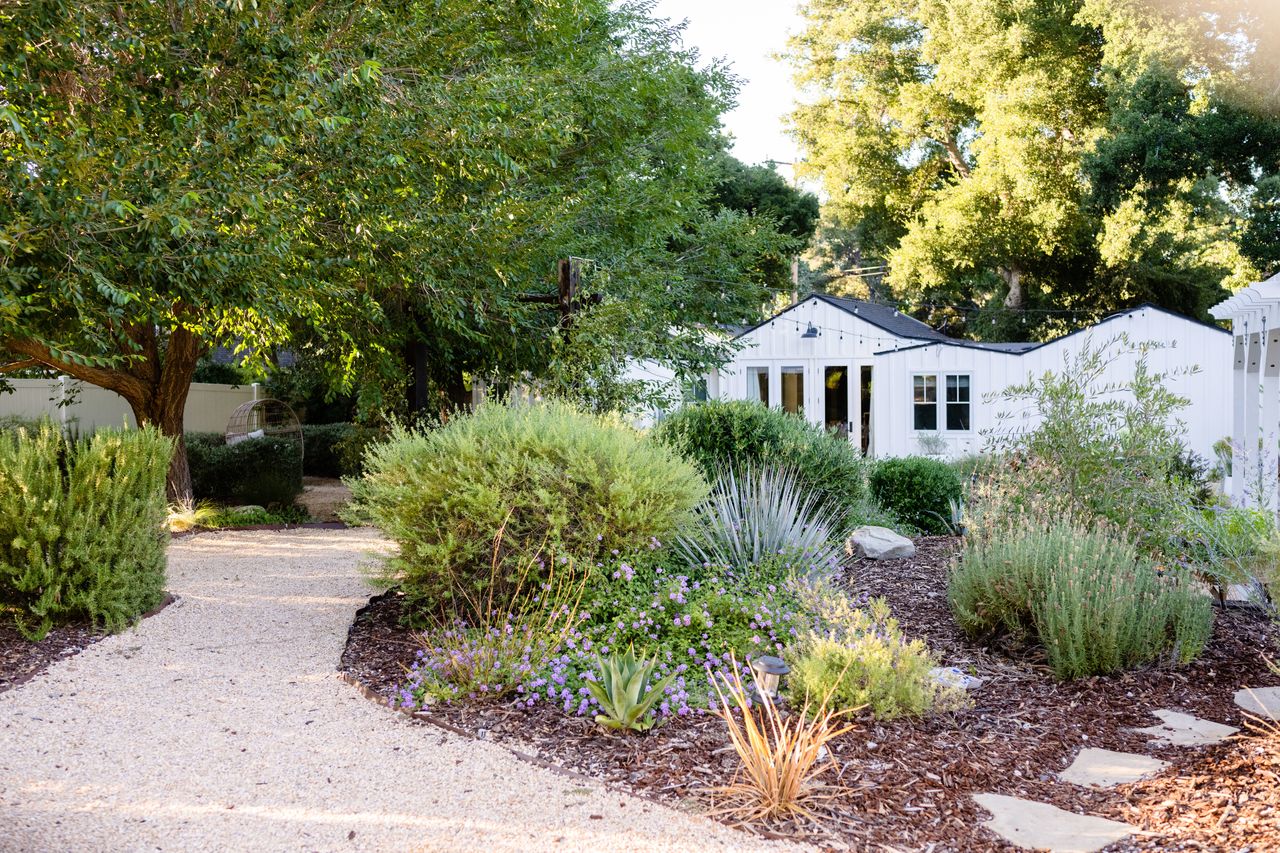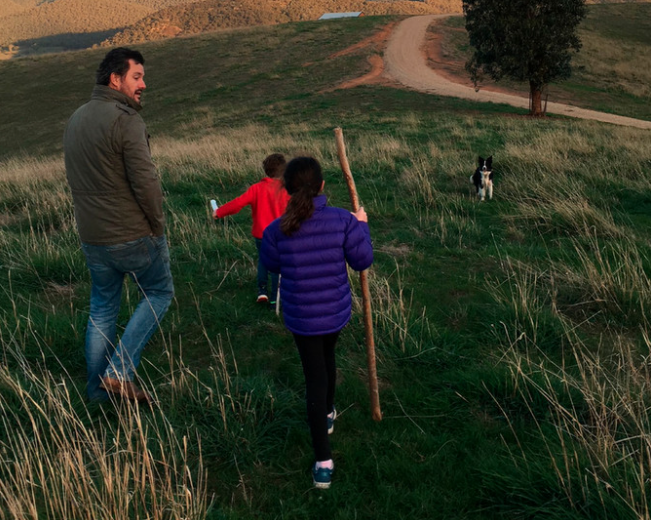Meet the Homeowners Spending Tens of Thousands to Let Their Lawns Go Wild
A growing number of people across the U.S. are ditching manicured grass for native plants and trees
Within Denver’s Washington Park neighbourhood, an enclave south of downtown where the median house listing price is just over $2 million, quintessential manicured American lawns roll out in front of historic brick bungalows, restored Victorians and contemporary new builds. Then there is Lisa Negri’s yard, which sits adjacent to her three-bedroom, two-bathroom bungalow where she’s lived since 2012.
“It looks like nature,” says Negri, 66, a retired engineer.
Roughly 50,000 plants comprising 92 species engulf her 0.14-acre lot, which until 2020 sported green lawn grass. She estimates the yard has cost roughly $75,000 for plants, bulbs, seeds and hardscaping. Negri’s creation, designed by Denver Botanic Gardens assistant curator of horticulture Kevin Philip Williams, rejects the time-honoured status symbol of a tidy lawn in favour of a new luxury: the rewilded yard.
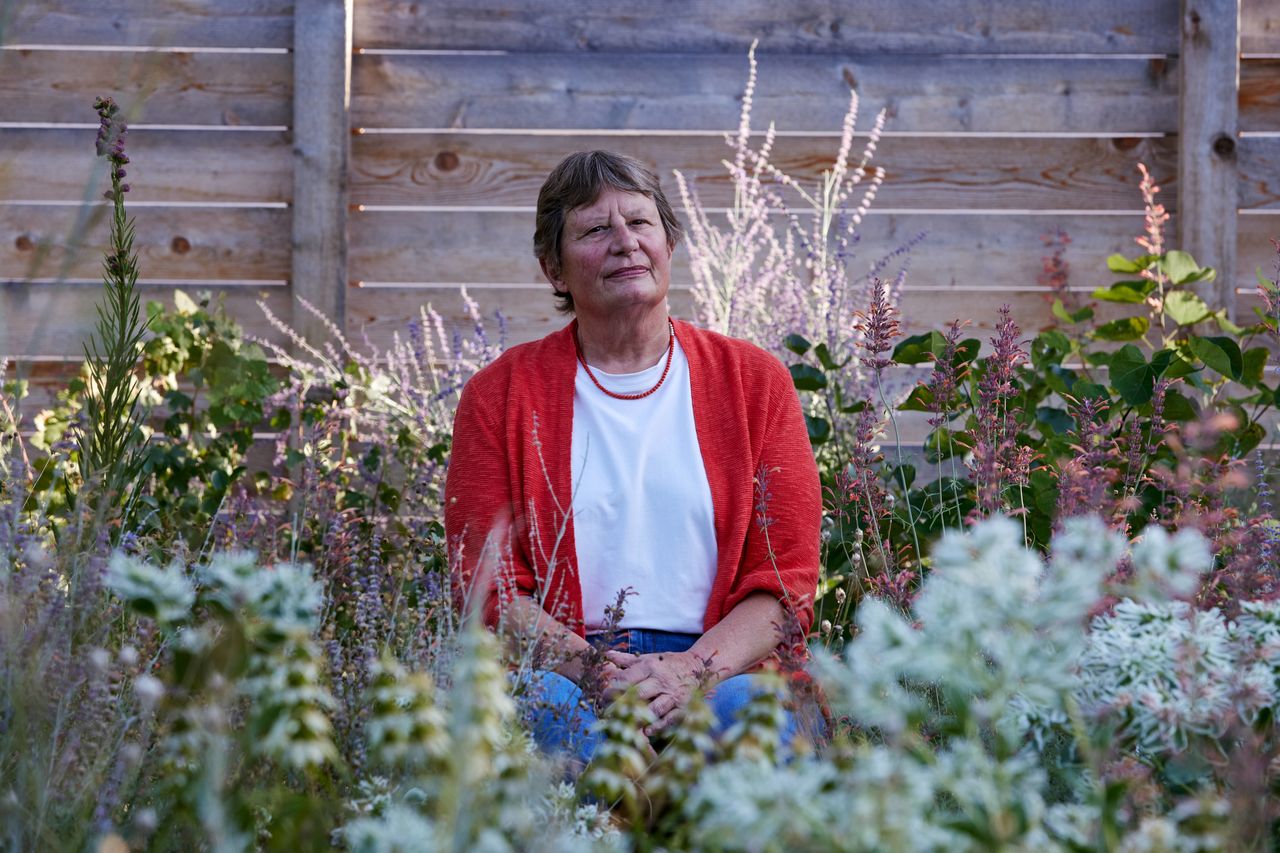
“Rewilding is returning land to a more natural state,” says Allison Messner, co-founder and CEO of Yardzen, a landscape design company with clients nationwide. Rewilding a yard typically involves introducing regionally appropriate plants, also called native plants, and fostering habitats for local wildlife. People come to the practice for myriad reasons. Some people want to support pollinators; some want to avoid water-guzzlers; others want to signal they are climate conscious. But the overarching purpose is universal: to encourage the flourishing of natural ecosystems and to mitigate the effects of habitat loss and climate change.
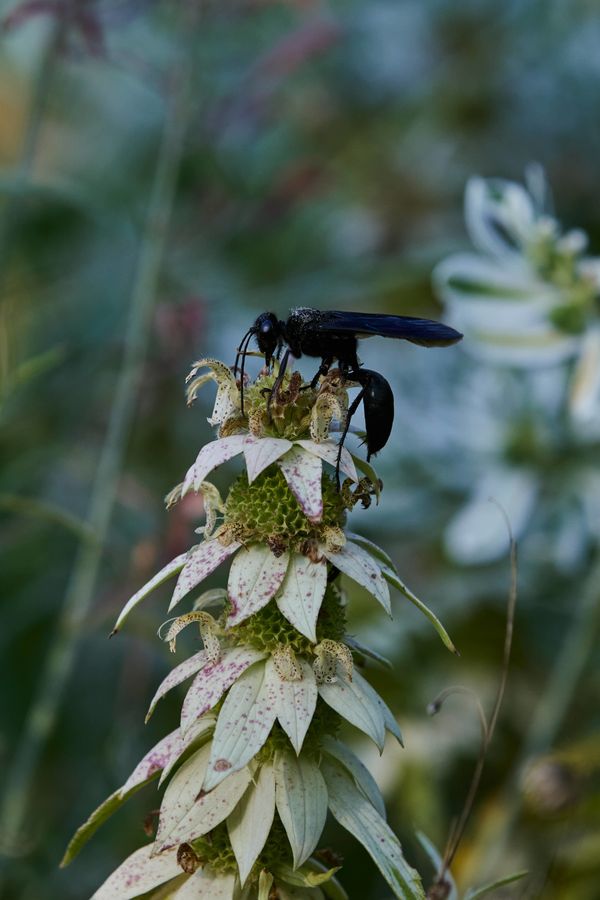
In Negri’s yard, this means interweaving prairie grasses and southwestern shrubs commingle with pockets of bulbs, wildflowers and succulents, all chosen to thrive in Denver’s climate, which is warm and dry in the summer and harsh in the winter, and has fierce year-round sun because of the altitude. Plants also specifically open the door to animals, insects, fungi and bacteria.
The space is one big meshed movement that throughout the year waxes and wanes in colour, height, shape and texture. A low-slung, post-winter skeletal brown becomes spring’s sprouting rainbow of lush hues, which gives way to summer’s 8-foot, reach-for-the-sky feathery silvers and waxy blues before fall’s explosion of radioactive yellows and Martian reds take hold for a last gasp as winter’s white waits in the wings.
A total of 9,000 plants and bulbs were planted in 2020, largely with help from neighbours and friends. Since then, Negri has planted fewer than 1,000 new plants but has added a large number of seeds. It took a year of significant watering to get roots established. Now the only substantial maintenance required is cutting the yard to the ground in the spring and watering two to three times a year.
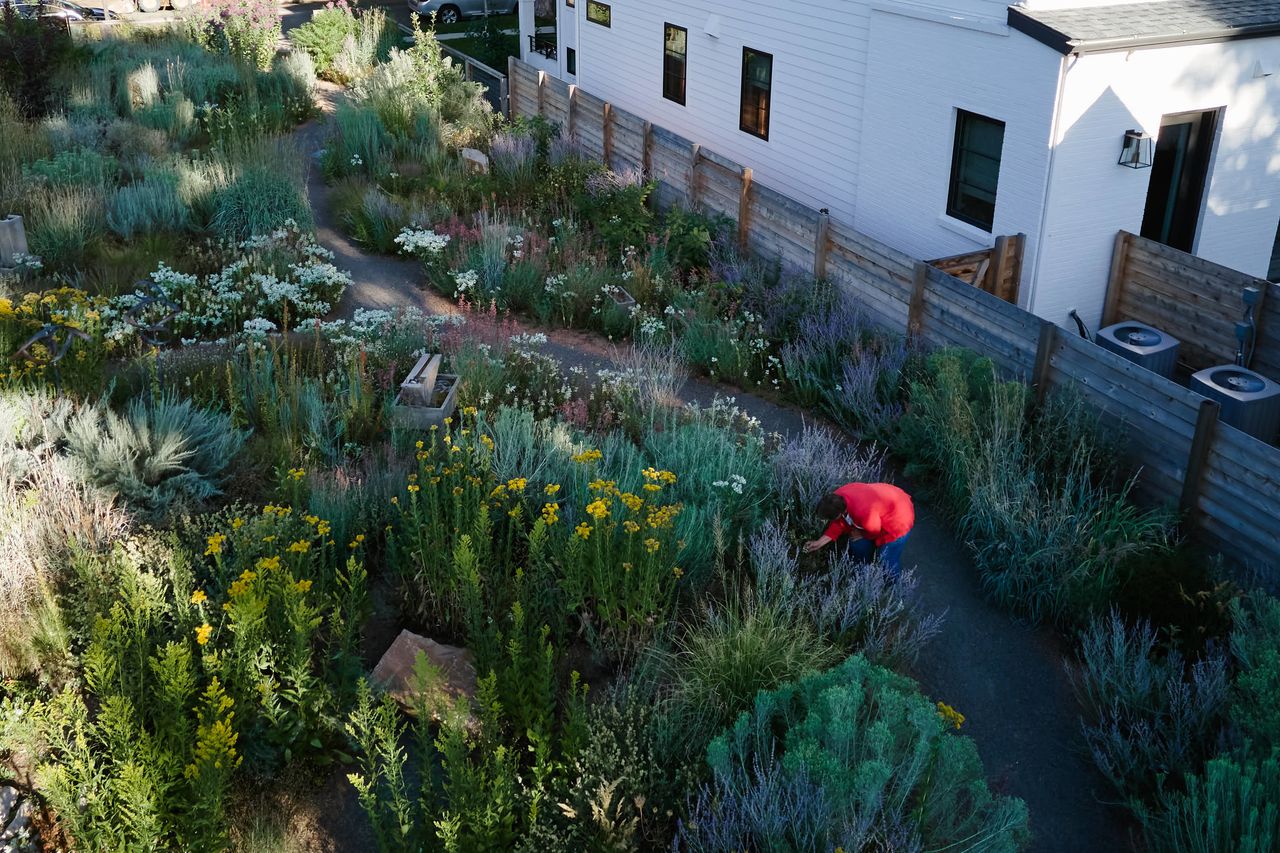
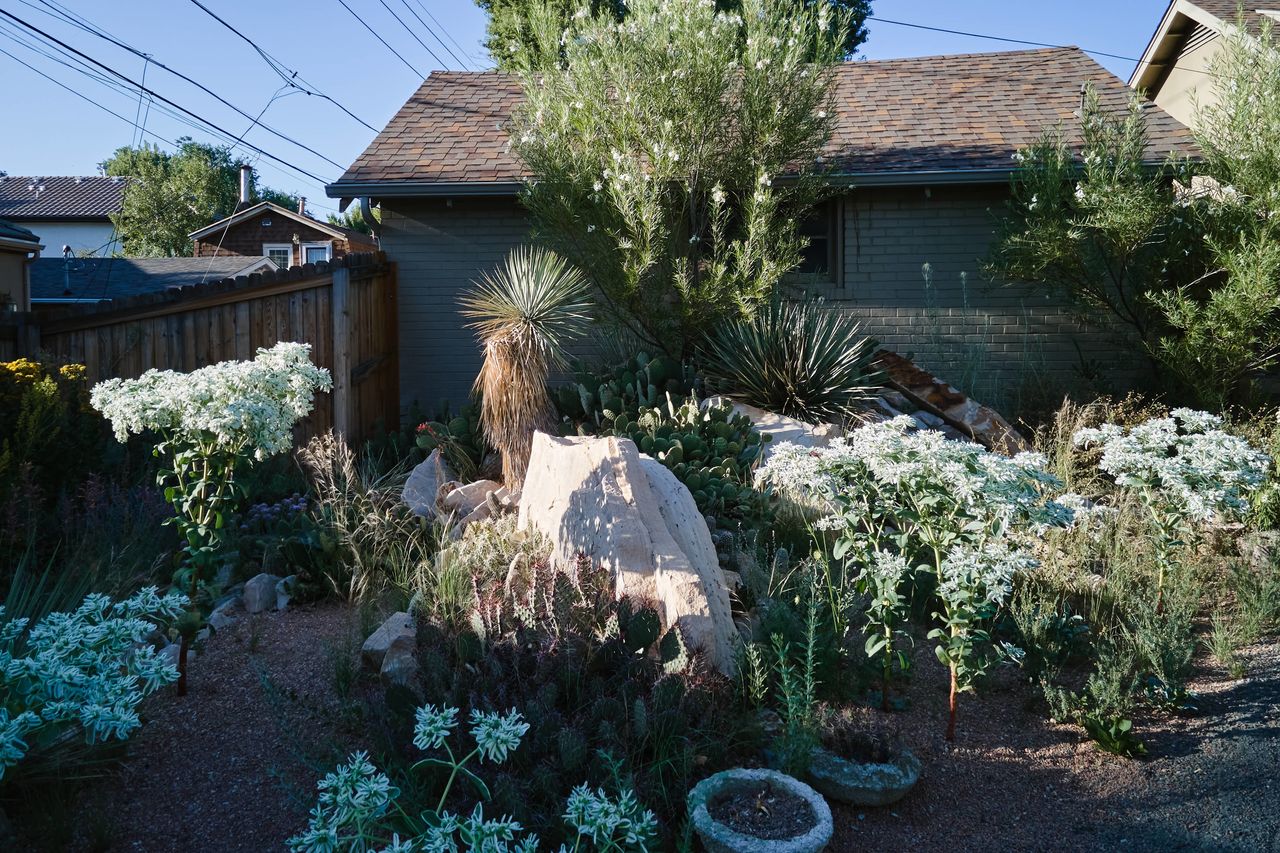
“A niche group of people has supported yard rewilding over the past decade or so, but recently it’s become much more mainstream,” Messner says. In 2022, Yardzen saw a 66% year-to-year increase in clients replacing green lawn grass with fully rewilded yards. “We’re not seeing thousands of people say, ‘Tear out my lawn and put in a rewilded yard,’ ” she says, but the majority of Yardzen’s clients are rewilding in some capacity. Last year, 90% of new Yardzen clients installed some type of native plants. “Things are moving in this direction,” she says.
Rewilded yards look different depending on climate and topography. In general, however, they support the web of life from below the ground up to the canopy, and every ecological layer in between, says Melissa Marie Wilson, CEO of Mill Valley, Calif.-based landscape firm Want Green Gardens. Lawns are nonexistent or minimized with native grasses. Plants bloom throughout the seasons. Native trees anchor the yard and provide wildlife with food and year-round shelter.
Eden Passante, 38, and Zan Passante, 47, worked with Yardzen to rewild their half-acre lot about 30 miles northwest of Los Angeles in the ranch community of Newhall, Calif. They purchased the property in 2016 for $560,000 and spent $400,000 gut-renovating their space, which totals 2,100 square feet and has three bedrooms, three bathrooms and a guesthouse. They estimate they have spent $65,000 on rewilding. Plants cost about $10,000; hardscaping cost the most. The bulk of the designing and planting took five months.
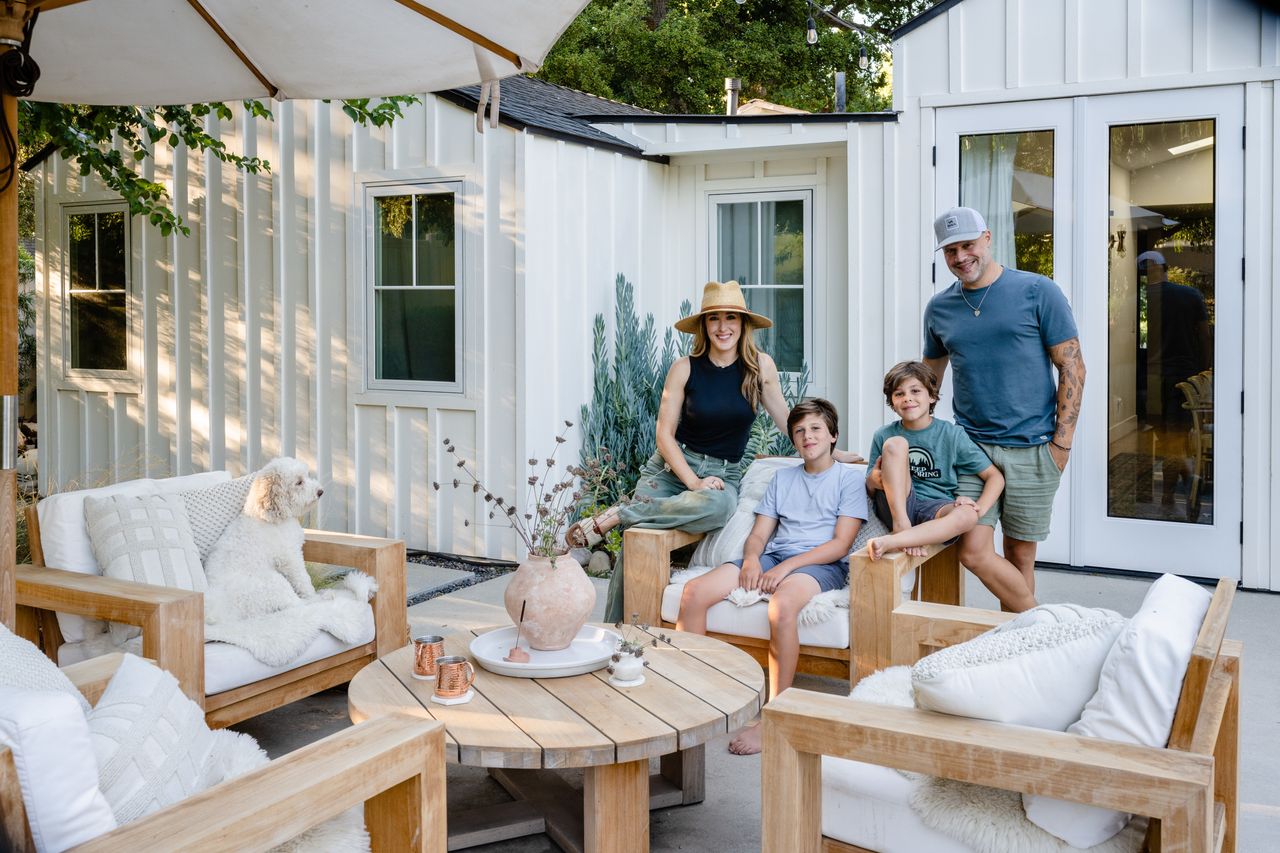
Today, the grassless yard is filled with whimsical flowers and succulents, such as blue chalksticks and large blue agaves. Gravel pathways lead to sitting and dining areas and a fire pit. There are garden beds for vegetables and edible flowers and a separate herb garden for mint, thyme, oregano and pineapple sage. A citrus grove has a Eureka lemon tree, a Meyer lemon tree, a yellow grapefruit tree, a lime tree and an orange tree.
“They are half native plants but all of the plants are drought-tolerant and zoned for this area,” says Eden Passante, who is the CEO of the home-entertaining website Sugar and Charm. Wildlife is active in the yard. A partridge laid 12 eggs under a bush. Pollinators love the blooming citrus trees.
The yard is low maintenance. “I try to let nature do its thing, but I remove any invasive weeds and keep the pathways nice,” she says. “The only difficulty is keeping the dust, rocks and pebbles out of the house.” Sometimes she wishes there was a soft play surface for her two young children.
Emily Murphy, an ethnobotanist with a background in ecology and environmental science and author of the regenerative gardening book Grow Now, says it is easy to get in the weeds with rewilding terminology. “It’s evolving in real time,” she says, noting that the word rewilding sprung up in conservation biology and ecology circles in the 1990s in reference to large-scale efforts to restore biodiversity and improve the integrity of landscape and natural systems.
Murphy says that rewilding a yard will obviously look very different from rewilding, say, a National Park. “Purists would say—and there is always a purist—that your yard can’t be compared to the reintroduction of wolves in Yellowstone.” But she believes that rewilded yards do contribute to the greater good. “Once you plant native plants, biodiversity will come,” she says, giving the example of a native oak tree, which can support roughly 2,300 species of animals and insects. In comparison, a non-native Chinese ginkgo has been documented to support five or fewer local species.
Jennifer Ehlert, vice president of landscape design firm Metro Blooms Design+Build in Minneapolis, says rewilding costs roughly the same as other landscaping. “A DIY pollinator patch might be in the hundreds,” she says. “Hiring a landscaping company to design and build some portion of a rewilded yard might be in the thousands. Rewilding your whole yard might be in the tens of thousands. If you’re into the hundreds of thousands, you have a huge property or you’re hardscaping as part of a bigger project.”
Dan Dufficy, founder of Mill Valley, Calif.-based California Native Landscapes nursery, encourages clients to start small. “Customers aren’t used to seeing these plants,” he says. “Their friends aren’t used to seeing these plants. They have no idea what the maturity of the product looks like.” To help clients get excited, he uses his hands to animate what plants look like and he uses vivid, educational language.
Not everyone is excited about yard rewilding. Homeowner associations can have landscape aesthetic rules. People who are allergic to bees have legitimate concerns. And then there are neighbours who just don’t get it.
Her first summer of rewilding, Lisa Negri in Denver received a cease-and-desist order from the city, which closed her down for eight months. “A neighbour called the city on me and said, ‘We don’t know what this person is doing. We’re afraid of it,’ ” Negri says. With the help of her garden designer and several horticulturists, she put together a 90-page presentation and ultimately received an open space conservation zoning designation, which is one of several types of conservation-related protections homeowners could pursue locally. Some cities—such as Austin, Texas, Evanston, Ill., and Green Bay, Wisc.—have passed ordinances in support of wildlife-friendly homeowners. This is also happening at the state level. In Minnesota, for example, a new state law bans cities from limiting managed natural landscapes.
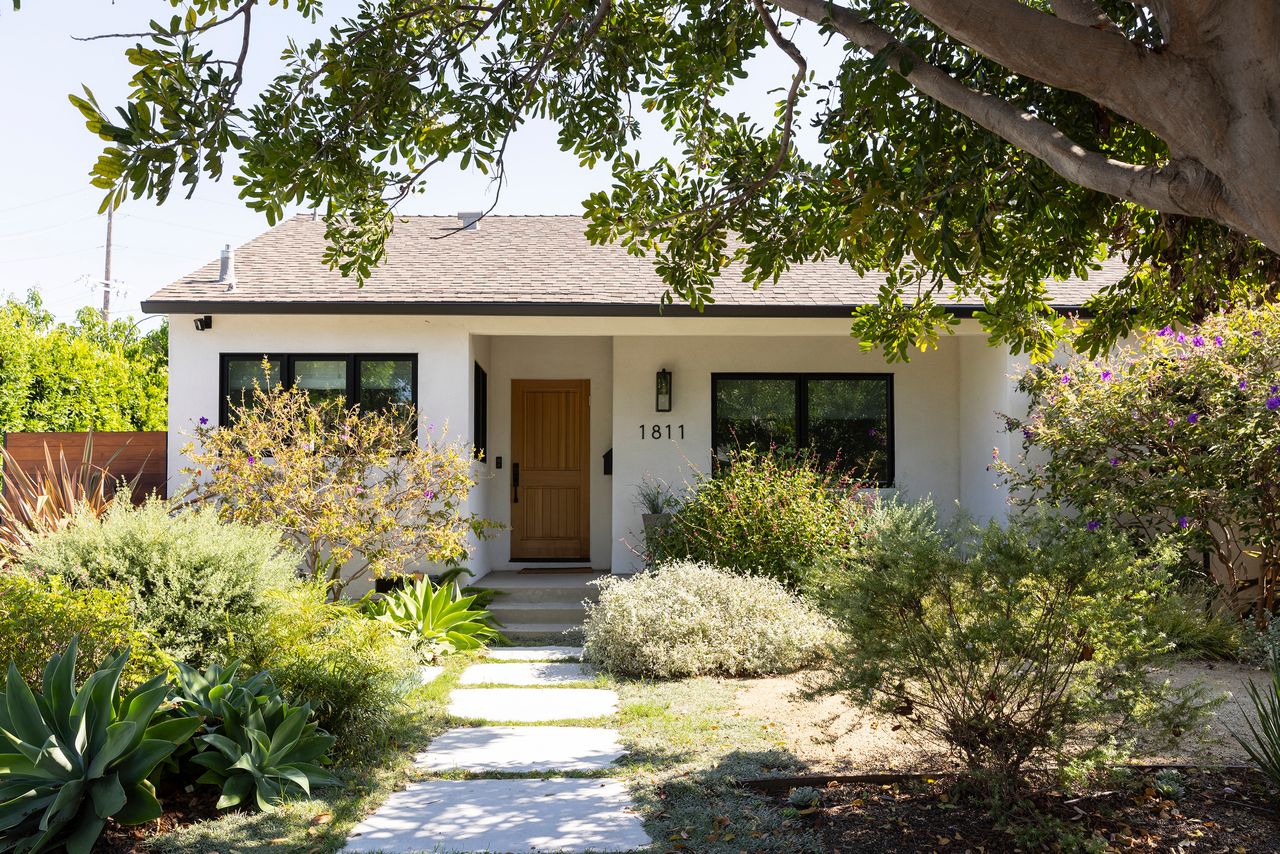
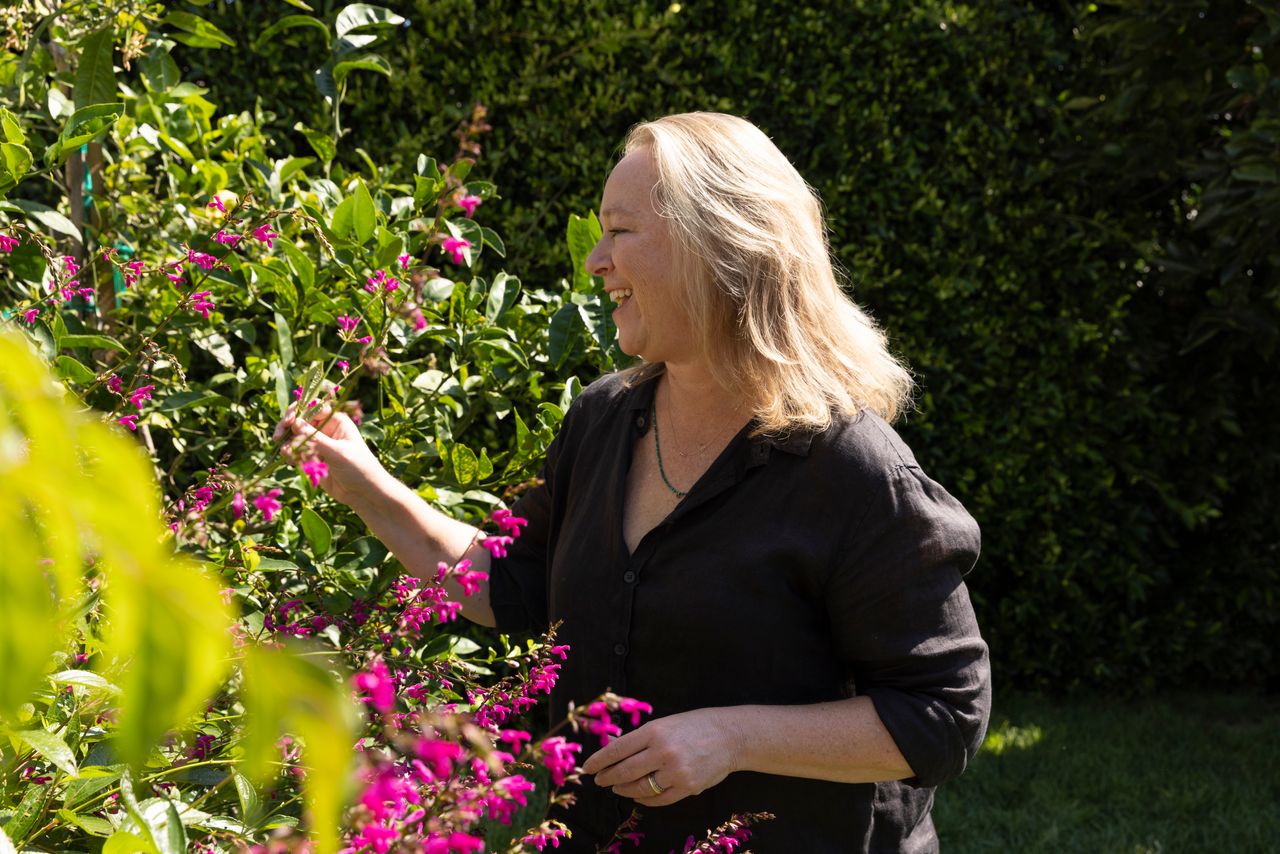

In Santa Monica, Calif., Roshanna Baron is having an opposite problem: Neighbours are copying her 0.13-acre rewilded yard. She and her husband, Nir Einhorn, 48, bought their house for $1.1 million in 2017. The couple received a landscaping blank slate when their yard was torn up during a nine-month renovation of their home, which has three bedrooms and two bathrooms, and totals 2,220 square feet, including their short-term rental guesthouse.
Planning their fully rewilded yard lasted about a month. Buying and installing $4,000 worth of plants took about two weekends with the help of a gardener. At first the landscaping felt empty, but after a year it was grown in. Three years later, the yard is colourful and warm with green- and blue-tinted plants, flowering succulents and a Meyer lemon tree. They kept a 75-year-old persimmon tree, the fruit of which keeps getting better as the yard’s soil improves.
“I’ve been stopped several times from husbands or wives saying they are planning on copying our yard,” says Roshanna Baron, 51, who works in entertainment industry talent relations and event planning. “One specifically told me he was copying everything because his wife loved it so much. A stranger parked in front of our home to tell me they aspire to have a yard like this.”
 Copyright 2020, Dow Jones & Company, Inc. All Rights Reserved Worldwide. LEARN MORE
Copyright 2020, Dow Jones & Company, Inc. All Rights Reserved Worldwide. LEARN MORE
This stylish family home combines a classic palette and finishes with a flexible floorplan
Just 55 minutes from Sydney, make this your creative getaway located in the majestic Hawkesbury region.
The bequests benefit charities, distant relatives and even pets
Charities, distant relatives and even pets are benefiting from surprise inheritances. They can thank people without children.
Not having children is becoming more common, both among millennials and older people. A July Pew Research Center analysis found that 20% of U.S. adults age 50 and older hadn’t had children.
And many of these people don’t have wills. An AARP survey found half of childless people age 50-plus who live alone have a will, compared with 57% of others that age. Those without wills have less control over what happens to their money, which often ends up in the hands of people who don’t expect it.
This phenomenon of a surprise inheritance is common enough that it has a name: the laughing heir .
“All they do is get the money and go, ‘Ah ha ha, look at that,’ ” said Michael Ettinger , an estate lawyer in New York.
Kelley Gilpin McKeig, a 64-year-old healthcare-industry consultant in Ridgefield, Wash., received a phone call several years ago saying her cousin Nick Caldwell left behind money in a savings account. They hadn’t been in touch for 20 years.
“I thought it was a scam,” she said. “Nobody else in our family had heard that he had passed.”
She hunted down his death certificate and a news article and learned he had died about a year and a half before in a workplace accident.
Caldwell, who was in his 50s, had died without a will. His estate was split among cousins and an uncle. It took about two years for the money to be distributed because of the paperwork and court approval involved. Gilpin McKeig’s share was $2,300.
Afterward, she updated her will to make sure what she has doesn’t go to “just anybody down the line, or cousins I don’t care about.”
Who inherits
There are trillions of dollars at stake as baby boomers age.
Most people leave their money to spouses and children when they die. A 2021 analysis of Federal Reserve survey data found that 82% of heirs’ inheritances came from parents.
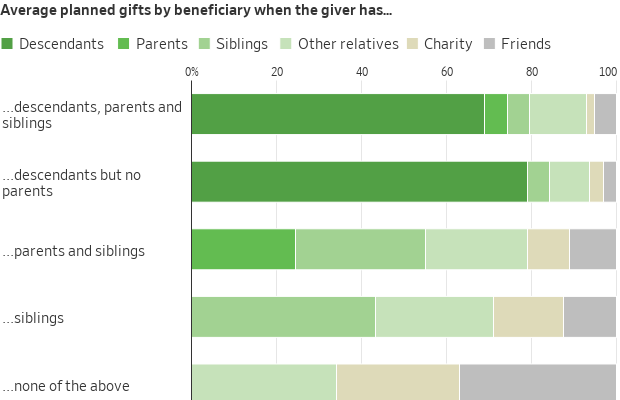
People with no children say they want to leave a greater share of their estates to charity, friends and extended family , according to research by two Yale law professors that surveyed 9,000 U.S. adults.
Rebecca Fornwalt, a 33-year-old writer, created a trust after landing a book deal. While her heirs are her parents, her backup heirs include her sister and about a half-dozen close friends. She set aside $15,000 for the care of each of her two dogs.
Susan Lassiter-Lyons , a financial coach in Florence, Ariz., said one childless client is leaving equal interests in her home to her two nephews. Another is leaving her home to a man she has been friends with for a long time.
“She broke his heart years ago and she feels guilted into leaving him property,” Lassiter-Lyons said.
A client who is a former escort estranged from her family is leaving her estate to two friends and to charity.
Lassiter-Lyons, who doesn’t have children, set up a trust for her two dogs should she and her wife die. The pet guardian, her wife’s sister, would live in their house while taking care of the dogs. When the dogs die, she inherits the house.
In the Yale study, people without descendants—children or grandchildren—intended to give 10% of their estates to charity, on average, more than triple the intended amount of those with descendants.
The Jewish Community Foundation of Los Angeles, which manages $1.3 billion of assets, a few years ago added an “heirless donors” section to its website that profiles donors and talks about building a legacy.
“Fifteen years ago, we never talked about child-free donors at all,” said Lew Groner , the foundation’s vice president for marketing.
In the absence of a will, heirs are determined by state law . Assets can wind up in the state’s hands. In New York, for example, $240 million in unclaimed funds over the past 10 years has arrived from estates of the deceased, not including real estate, according to the state comptroller’s office. In California, it is $54.3 million.
Hard questions
Financial advisers say a far bigger concern than who gets what is making sure there is enough money and support for a comfortable old age, because clients without children can’t call on them for help.
“I hope there is something left to leave,” said Stephanie Maxfield, a 43-year-old therapist in southern Colorado. “But if there isn’t, I think that’s OK, too.”
She said she would like to leave something to her partner’s nieces and nephews, as well as animal shelters and domestic-violence shelters. Her best friend is a beneficiary.
Choosing an estate executor and who would handle money and health decisions on your behalf can be difficult when you don’t have children, financial advisers say. Using a promised inheritance as a reward for taking care of you when you are older isn’t a good solution, said Jay Zigmont , an investment adviser focused on childless people.
“Unfortunately, it is relatively common to see family members who are in the will decide to opt for cheaper medical care (or similar decisions) in order to protect what they will be inheriting,” he said in an email.
Kirsten Tompkins, who is from Birmingham, U.K., and works in consulting, along with her husband divided their estate among their dozen nieces and nephews.
Choosing heirs was the easy part. What is hard is figuring out whom to ask for help as she and her husband get older, she said.
“A lot of us are at an age where we are playing that role for our parents,” the 50-year-old said, referring to tasks such as providing tech support and taking parents to medical appointments. “Who is going to do that for us?”
This stylish family home combines a classic palette and finishes with a flexible floorplan
Just 55 minutes from Sydney, make this your creative getaway located in the majestic Hawkesbury region.









